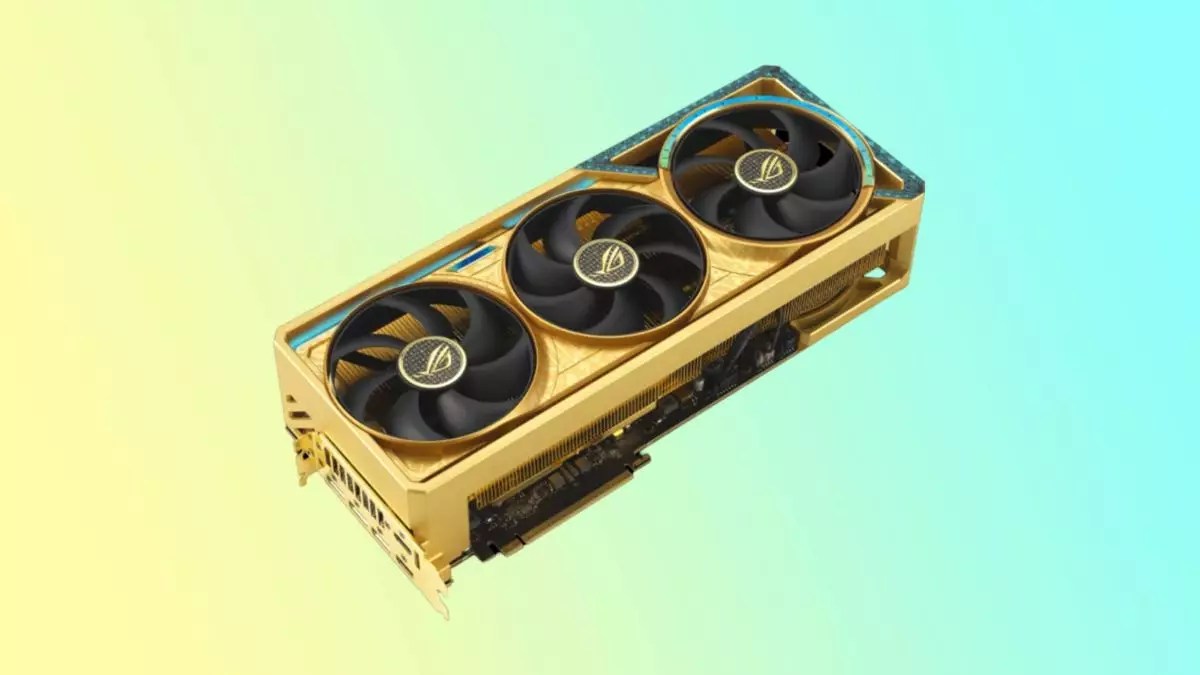The graphics card market has become an exquisite game of scarcity, with the recently launched Nvidia RTX 50-series exemplifying this phenomenon. The allure surrounding these GPUs resembles that of high-value collectibles, often leaving enthusiasts and gamers in a perpetual state of yearning. This is reflected clearly in the responsiveness of the market—within moments of their launch, stocks of these coveted GPUs plummeted to near nonexistence, creating a palpable atmosphere of rarity. Amidst this chaos, Asus has chosen to elevate this trend to an almost of mythical proportions with the introduction of their latest offering: the Asus ROG Astral RTX 5090 Dhahab OC Edition.
The launch of the RTX 5090 series represents more than just a mere product introduction; it serves as a case study in market dynamics defined by scarcity. Consumers today are hyperaware of the scarcity phenomenon, which drives them to an almost obsessive level of desire for products that appear limited in availability. The intense competition and rapid sell-outs underscore how desirable these technological marvels have become, with consumers willing to invest thousands of dollars if it means they can secure a coveted piece of hardware. Even at a staggering price point of over $3,000 for the standard options, it’s evident that for many, acquiring luxury GPUs fuels a sense of status and identity within the gaming community.
The Asus ROG Astral RTX 5090 Dhahab OC Edition adds another layer to this narrative of desire—its gilded appearance serves not merely as a showpiece, but as a statement. “Dhahab,” translating to “gold” in Arabic, exudes opulence and prestige. Asus positions this graphics card not only as a gaming tool but as an emblem of admiration for the changing skyline of the Middle East. With a design that melds modern aesthetics with cultural symbolism, the GPU speaks to both gamers and collectors alike.
The visual appeal of the card, complete with blue splashes that contrast against the golden exterior, highlights Asus’s commitments to artistic design that frames modern technology in a culturally significant context. This investment in aesthetics goes beyond superficiality; it reflects a broader trend in the tech space where branding and visual identity play crucial roles in marketing high-end electronics.
On a technical level, the Dhahab Edition embodies features that cater to advanced gaming experiences. Asus has expanded the architecture of this card with a quad-fan design, ensuring optimal cooling for intense gaming sessions. This move results in better thermal management, allowing enthusiasts to push the card’s capabilities without the overheating risks commonly associated with high-performance GPUs. These advancements position it as not just a visually stunning piece but as a powerhouse in performance.
However, one must ponder whether such a degree of engineering is truly necessary for the average gamer or simply an appeal to enthusiasts who want the ultimate bragging rights. One can’t help but question if the additional fan serves a practical function beyond aesthetics, given that many gaming setups do quite well with fewer cooling solutions.
As we examine the desirability of the Asus ROG Astral RTX 5090 Dhahab OC Edition, it’s important to consider the implications of spending large sums on luxury electronics. For some, the acquisition represents more than a mere purchase; it evokes emotion and identity within the gaming community. However, is it sustainable consumerism? As technology continues to evolve, considering the longevity of such an investment invites a more critical examination.
The allure of golden GPUs and unattainable products is indeed intoxicating. Still, one must ask if tying personal worth to material possessions is a healthy practice. Ultimately, while the Dhahab Edition may provide validation and buzz for a select few, it carries weighty implications about consumer values and the motivations driving high-end electronics purchases.
The RTX 5090 Dhahab Edition represents both the height of technological advancement and the complexities of consumer culture in the gaming community. With its opulence and scarcity, it stands as a testament not only to Nvidia’s engineering prowess but to the intricate interplay between desire, status, and consciousness in today’s tech-driven world.


Leave a Reply